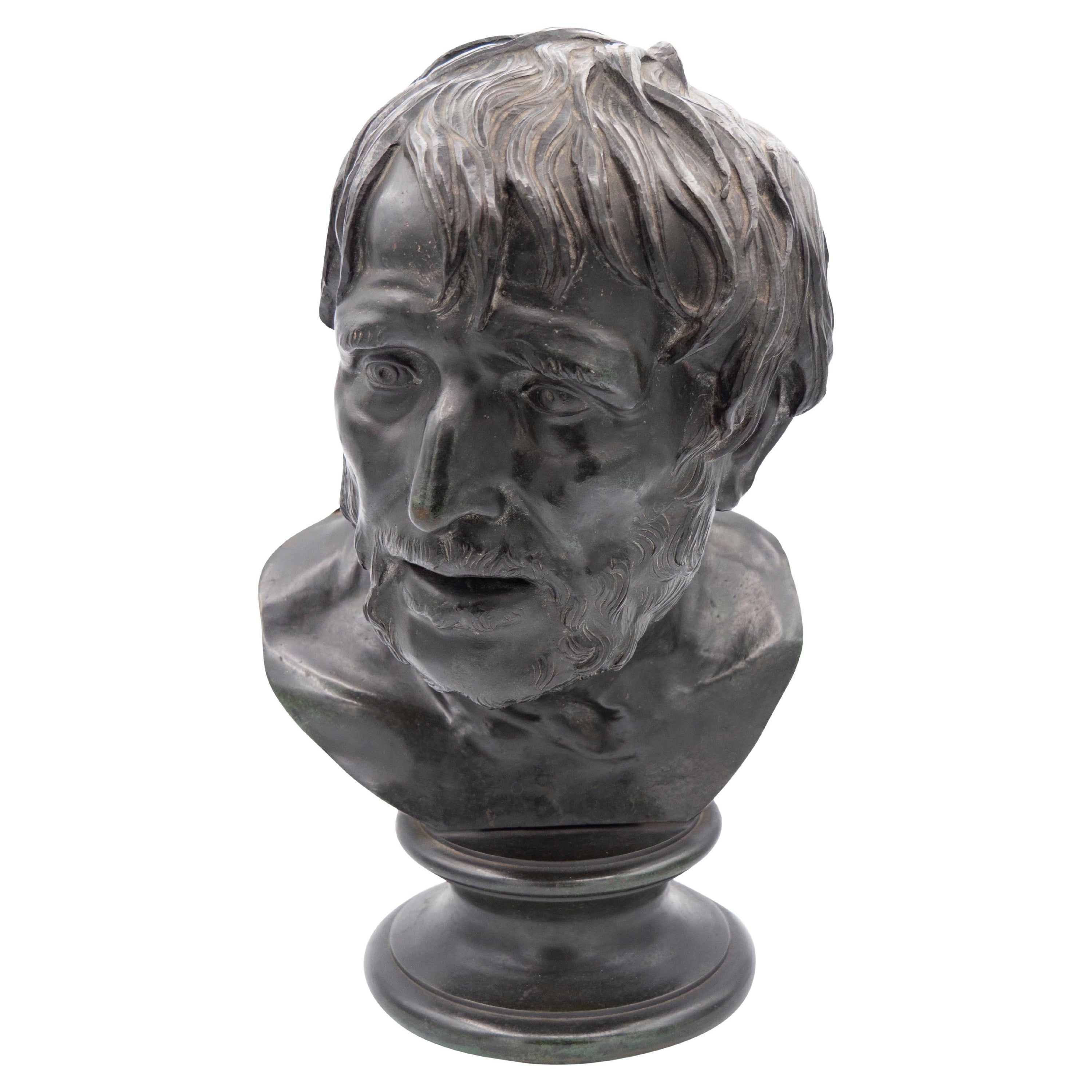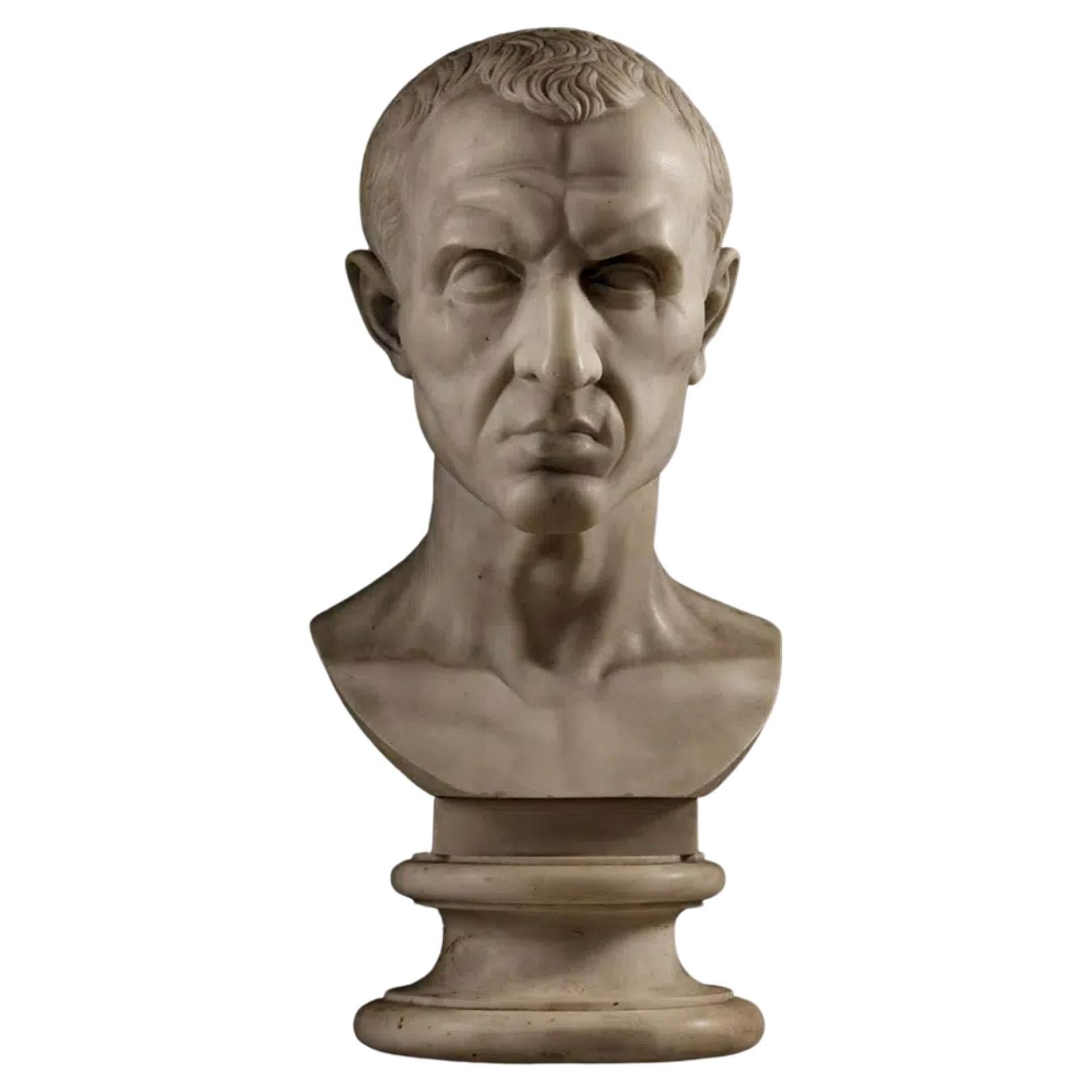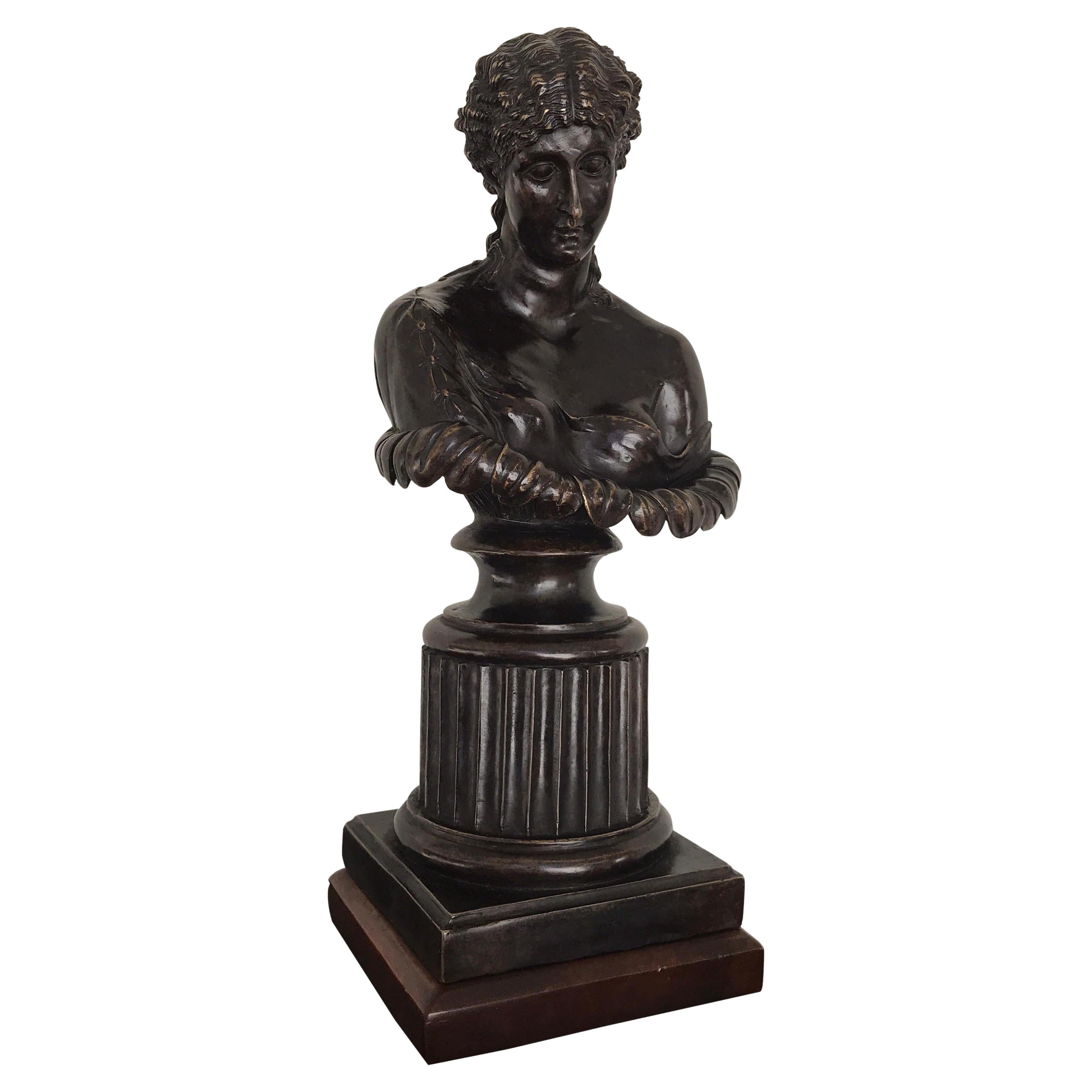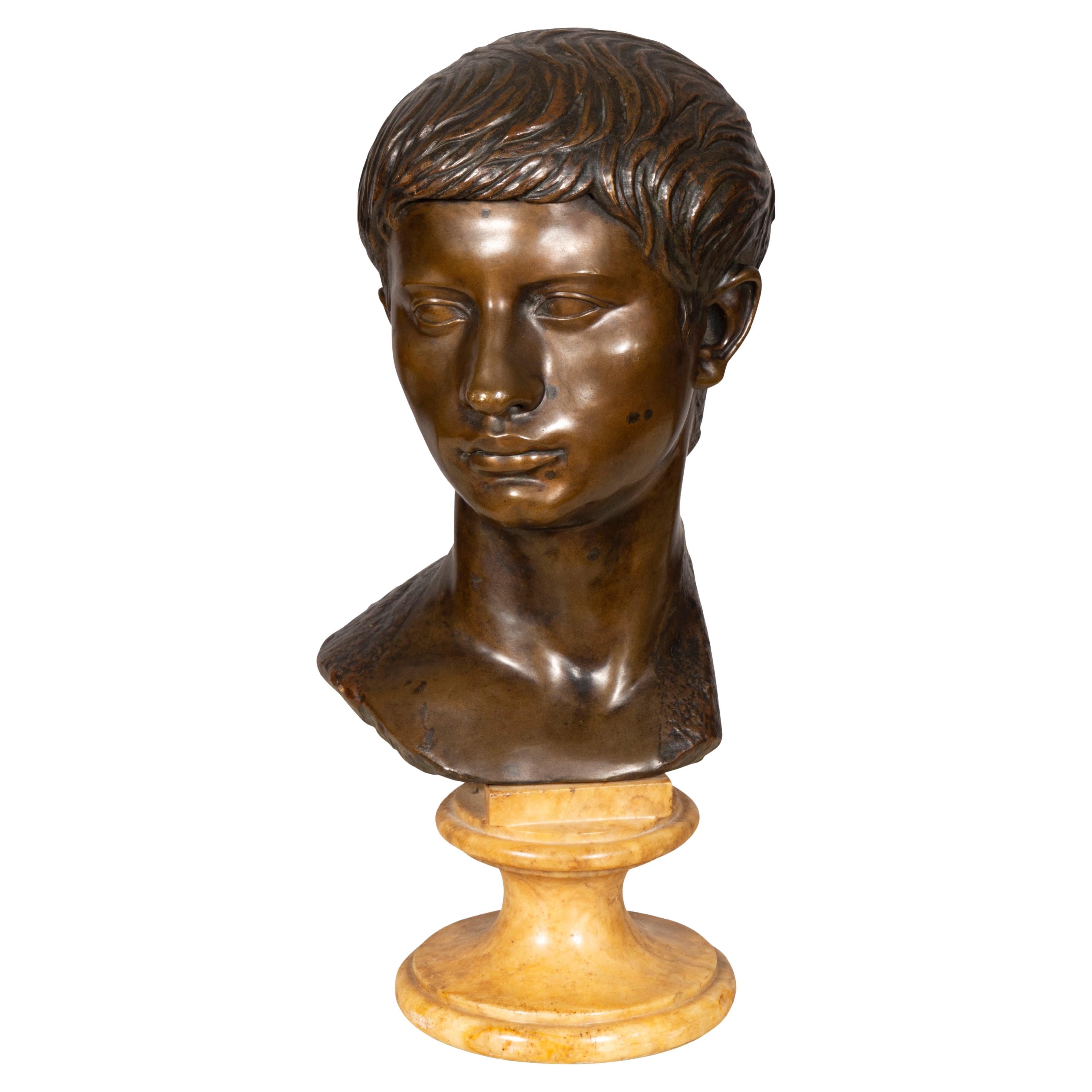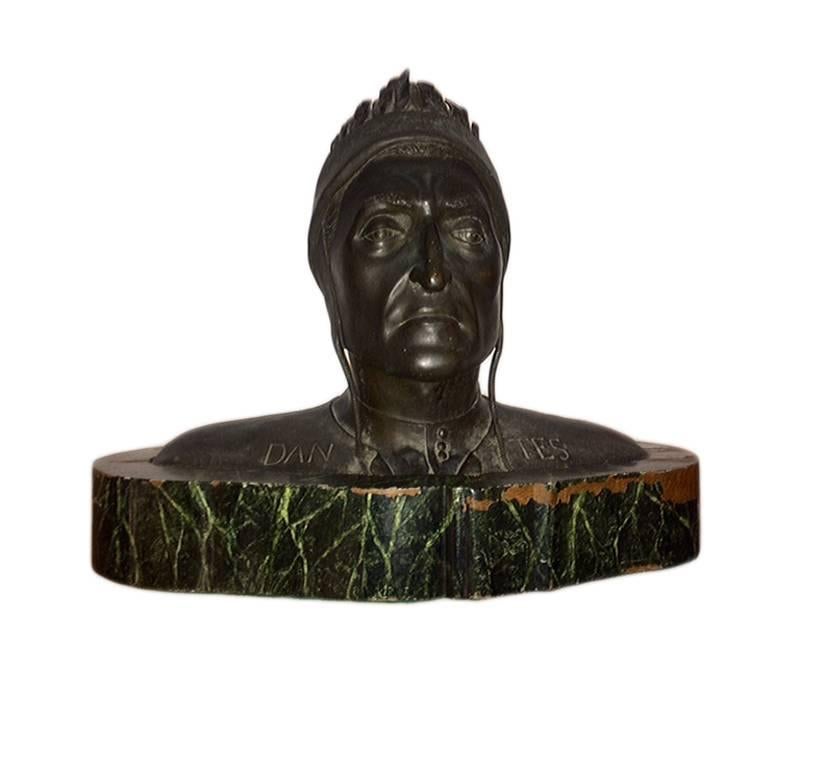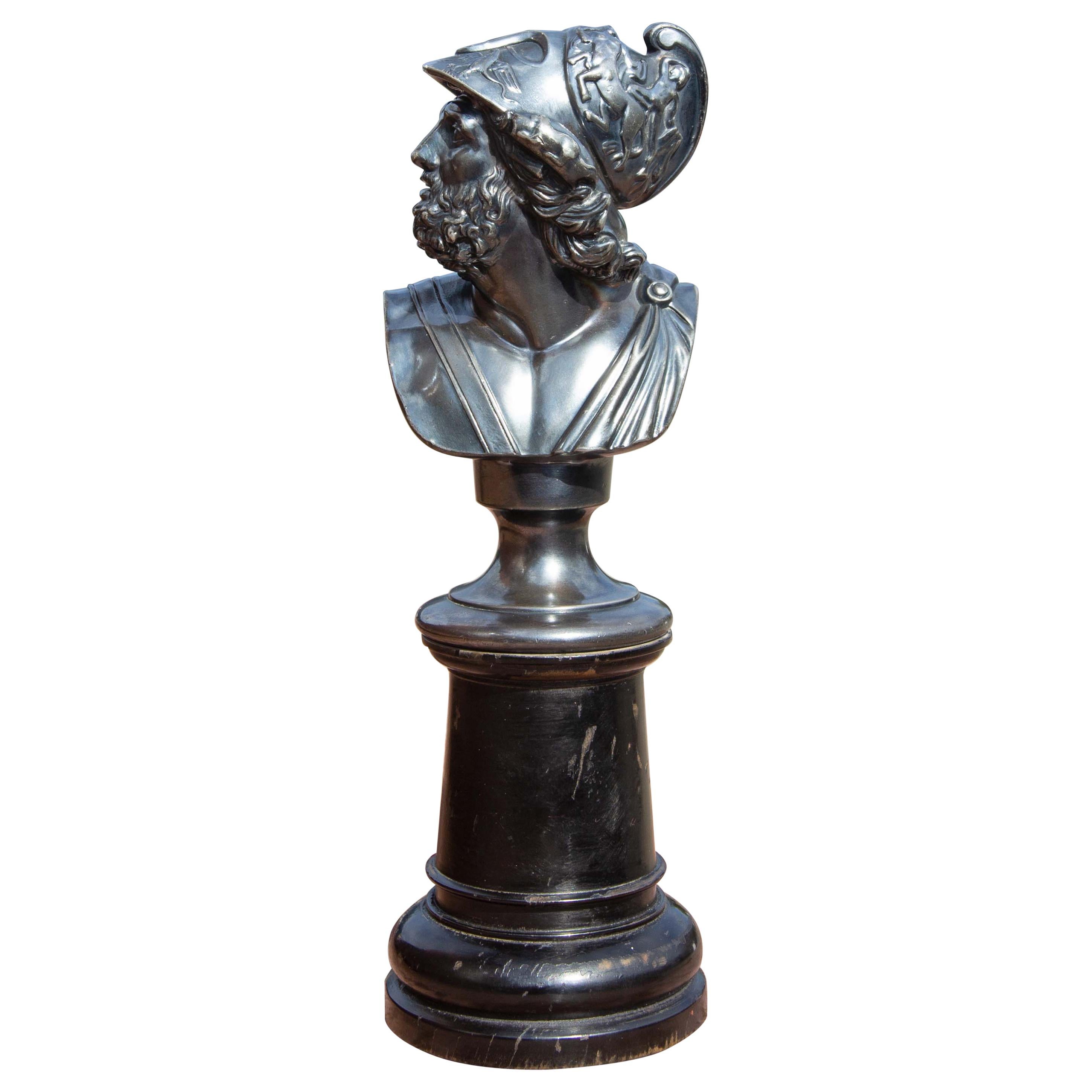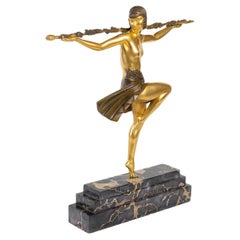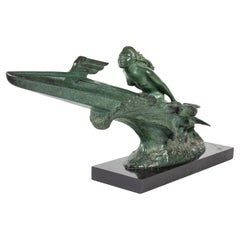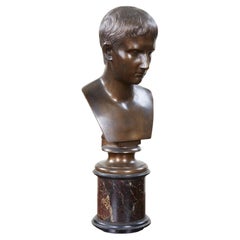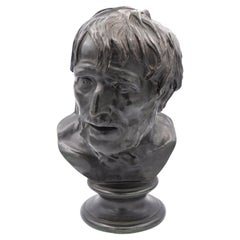
XIXth Century Grand Tour Bust of Caracalla and Its Porphyry Column
View Similar Items
Want more images or videos?
Request additional images or videos from the seller
1 of 15
XIXth Century Grand Tour Bust of Caracalla and Its Porphyry Column
About the Item
- Dimensions:Height: 19.69 in (50 cm)Width: 7.09 in (18 cm)Depth: 4.73 in (12 cm)
- Style:Grand Tour (In the Style Of)
- Materials and Techniques:
- Place of Origin:
- Period:
- Date of Manufacture:circa 1870
- Condition:Wear consistent with age and use.
- Seller Location:Saint-Ouen, FR
- Reference Number:1stDibs: LU2612328766572
About the Seller
4.9
Vetted Seller
These experienced sellers undergo a comprehensive evaluation by our team of in-house experts.
1stDibs seller since 2017
56 sales on 1stDibs
Typical response time: 1 hour
More From This SellerView All
- Pair of Porcelain Vases Ormolu-Mounted in Lamps by Gagneau Paris XIXth CenturyBy Gagneau ParisLocated in Saint-Ouen, FRPair of large Japanese Porcelain Cone Shape Vases with Imari decoration Important mounts in ormolu and gilded metal, the base decorated with a laurel wreath, the upper part of falling leaves and a frieze of knotted ribbon. The mounts signed Gagneau, 115 R. Lafayette. Circa 1860 With their original aluminium bulb cover and original gilding Vase it self Height 47 cm The Gagneau Company is one of the most famous lighting factories in Paris in the nine-teenth century, established in 1800 at 25 rue d'Enghien in Paris and later at 115 rue de Lafayette. She has participated in many exhibitions throughout this century. She began in 1819 with the Exposition des Produits de l'Industrie and later participated in the Universal Exhibitions where she was part of the jury in the category of art bronzes (class 25) at the Universal Exhibition in Paris in 1889. "Imari" was simply the trans-shipment port for Arita wares, from where they went to the for-eign trading outposts at Nagasaki. It was the kilns at Arita which formed the heart of the Japanese porcelain industry. Arita's kilns were set up in the 17th century, after kaolin was discovered in 1616. A popular legend attributes the discovery to an immigrant Korean potter, Yi Sam-Pyeong (1579–1655), although most historians consider this doubtful. After the discovery, some kilns began to produce revised Korean-style blue and white porcelains, known as Early Imari, or "Shoki-Imari". In the mid-17th century, there were also many Chinese refugees in northern Kyushu due to the turmoil in China, and it is said that one of them brought the overglaze enamel coloring technique to Arita. Thus Shoki-Imari developed into Ko-Kutani, Imari, and later Kakiemon, which are sometimes taken as a wider group of Imari wares. Ko-Kutani was produced around 1650 for both export and domestic market.Kutani Ware is characterized by vivid green, blue, purple, yellow and red colors in bold designs of landscapes and nature. Blue and white porcelain pieces continued to be produced and they are called Ai-Kutani. Ko-Kutani Imari for the export market usually adopted Chinese design structure such as kraak style, whereas Ai-Kutani for the domestic market were highly unique in design and are ac-cordingly valued very much among collectors. Ko-Kutani style evolved into Kakiemon-style Imari, which was produced for about 50 years around 1700. Kakiemon was characterized by crisp lines, and bright blue, red and green designs of dramatically stylized floral and bird scenes. Imari achieved its technical and aes-thetic peak in the Kakiemon style, and it dominated the European market. Blue and white Kakiemon is called Ai-Kakiemon. The Kakiemon style transformed into Kinrande in the 18th century, using underglaze blue and overglaze red and gold enamels, and later additional colors. Imari began to be exported to Europe when the Chinese kilns at Jingdezhen were damaged in the political chaos and the new Qing dynasty government halted trade in 1656–1684. Ex-ports to Europe were made through the Dutch East India Company, and in Europe the des-ignation "Imari porcelain" connotes Arita wares of mostly Kinrande Imari. Export of Imari to Europe stopped in mid-18th century when China resumed export to Eu-rope, since Imari was not able to compete against Chinese products due to high labor costs. By that time, however, both Imari and Kakiemon styles were already so popular among Eu-ropeans that the Chinese export porcelain copied both, a type known as Chinese Imari. At the same time, European kilns, such as Meissen and English potteries such as Johnson Bros. and (Royal) Crown Derby, also imitated the Imari and Kakiemon styles. Export of Imari surged again in late 19th century (Meiji era) when Japonism flourished in Europe.Thus, in the western world today, two kinds of true Japanese Imari can...Category
Antique 1880s French Japonisme Table Lamps
MaterialsBronze
$8,401 Sale Price / set30% Off - Pierre Le Faguays (1892~1962) "Dancer of Thyrsus" An Art Deco Bronze FigureBy Pierre Le FaguaysLocated in Saint-Ouen, FRPierre Le Faguays (1892~1962) "Dancer of Thyrsus" An Art Deco Bronze Figure circa 1930 An iconic Art Deco cold painted gilt and patinated bronze sculpture of a semi-naked dancer hold...Category
Vintage 1920s French Art Deco Figurative Sculptures
MaterialsMarble, Bronze
- Frederic C.FOCHT (1879-1937) "Vitesse" An Art Deco Bronze Sculpture circa 1930By Frederic FochtLocated in Saint-Ouen, FRFrederic C.FOCHT (1879-1937) "Vitesse" circa 1930 A "Vitesse" ("Speed") green patinated bronze sculpture byFrederic C.Focht around 1930 On a black marble base. Signed "Fred C.Foch...Category
Vintage 1920s French Art Deco Figurative Sculptures
MaterialsMarble, Bronze
- French 19th Century Pair of Porcelain Cache-PotsLocated in Saint-Ouen, FRPair of polychromed hand painted porcelain with Japonisme floral decoration Ormolu-mounted with open-worked base and rim Louis XVI Style circa 1880.Category
Antique 1870s French Chinoiserie Planters, Cachepots and Jardinières
MaterialsOrmolu
$1,920 Sale Price / set20% Off - A Very Fine Quality 19th Century French Pair of CandlesticksLocated in Saint-Ouen, FRVery Fine French 19th Century Pair of Candlesticks In ormolu, very finely chiseled and decorated with knotted garlands, branches of leafy flowers, spokes of hearts, leaves of water...Category
Antique 1870s French Louis XVI Candlesticks
MaterialsOrmolu
- A French 19th Century Pair of Louis XIV Style StoolsLocated in Saint-Ouen, FRA French 19th Century Pair of Large Rectangular Stools natural and carved wood. The 4 sheaths feet carved and linked by a stretcher. Louis XIV Style Napoléon III Period Circa 1880...Category
Antique 1880s French Louis XIV Stools
MaterialsBeech
You May Also Like
- Grand Tour Bust of AugustusLocated in Greenwich, CTItalian 19th century bronze bust of Augustus Ceasar, finely detailed and well patinated, standing on turned ebonized wood and marble socle plinth base.Category
Antique Mid-19th Century Italian Grand Tour Busts
MaterialsMarble, Bronze
- Grand Tour Bronze Bust of SenecaLocated in Essex, MAModeled after the original found at Pompeii.Category
Antique 1880s Italian Grand Tour Busts
MaterialsBronze
- Grand Tour Bronze Bust of HomerLocated in Essex, MAFrom the J. Chiurazzi foundry in Naples. Homer with nice rich patina on a Siena marble socle. Foundry medallion on back of base.Category
Antique 19th Century Italian Grand Tour Busts
MaterialsSiena Marble, Bronze
- Grand Tour Bust of Julius Caesar, 19th CenturyLocated in London, by appointment only19th Century Grand Tour statuary marble portrait bust of Julius Caesar 12 July 100 BC – 15 March 44 BC Bust of Julius Caesar Julius Caesar was a...Category
Antique 19th Century Italian Grand Tour Busts
MaterialsMarble
- Grand Tour Style Bronze Bust of ClytieLocated in West Palm Beach, FLGrand Tour Style bronze bust of Clytie, after the antique, the nymph with downcast face and scantily draped, cupped in a large flower. Raised on a 6" sq...Category
Early 20th Century French Grand Tour Busts
MaterialsBronze
- Grand Tour Marble Bust Psyche Of CapuaLocated in Newark, EnglandFine marble bust on pedestal after the antique. The bust sculpted as the goddess Psyche Of Capua presented as a nude female with a draped partial robe ...Category
Antique 19th Century Italian Grand Tour Busts
MaterialsCarrara Marble
Recently Viewed
View AllMore Ways To Browse
Museum Bust
Roman History
The Grand Tour Sculpture
Grand Tour Original
Mold Column
Italian Grand Tour Sculpture
Rome Grand Tour
Grand Tour Marble Sculpture
Column With Bust
Roman Sculpture Piece
Rome Column
Vatican Sculpture
Grand Tour Collection
Black Marble Italian Columns
Rome 1870
Roman Marble Column
Red Marble Columns
Red Marble Column

